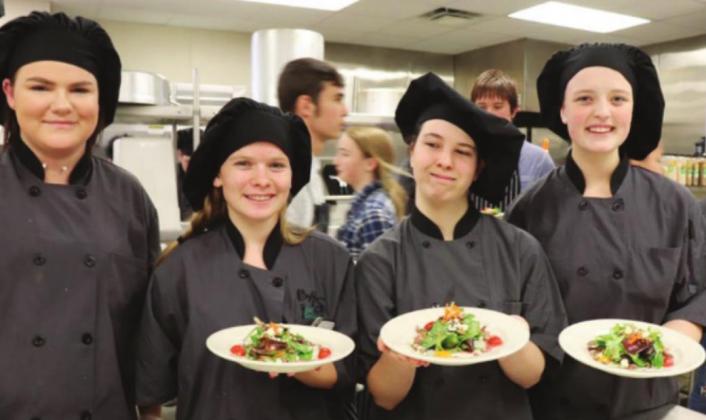Bulldog Spirit, Pride and Honor could be responsible for creating cuisine that is literally out of this world.
Burnet High School culinary students have been selected to participate in the 2020-21 NASA HUNCH (High school students United with NASA to Create Hardware) Culinary Challenge. Culinary students from all over the country will be competing, with each school preparing two healthy comfort food dishes that could be consumed by NASA astronauts during their time in space.
Students will spend time this fall studying about microgravity effects on food and food processing as well as the nutritional guidelines for astronauts. In November, the schools will turn in their dish ideas to the HUNCH program manager so they can be critiqued by the Johnson Space Center Food Lab to be reviewed to determine which entree may be best suited for a microgravity environment.
In December the schools will receive recommendations and begin preparing their final recipes for competition along with a final paper and accom panying video. Preliminary competitions will take place at regional NASA centers with the final papers due in April.
By early May, the top 10 selectees will be invited to attend a final challenge competition at the Johnson Space Center with the astronaut and International Space Station program office. Two weeks after the competion, the winning entry will be announced, with their food being processed for space flight by the JSC Food Lab.
NASA takes the culinary challenge seriously due a desire to study the effects of food physiology on human immune response and adaptation to spaceflight, especially the key effects of an enhanced diet on immune funciton, the gut microbiome and other nutritional status indicators. Diet is one of the only things that can easily and meaningfully be altered on both Earth and during flight for study, according to NASA scientists.
Dishes must be 200-400 calories each and contain 12 grams or less of fat, three grams or less of saturated fat, 250 milligrams or less of sodium, three grams or more of dietary fiber and eight grams or less of sugar. They must process well for space flight and use in microgravity.
Entries will be graded with 60 percent of the grade based on food prep, recipe and entree review; 25 percent based on the paper and 15 percent based on the video.
The 2020-2021 HUNCH Culinary Challenge is a partnership between the American Culinary Federation, Sullivan University and the Johnson Space Center Food Lab.



